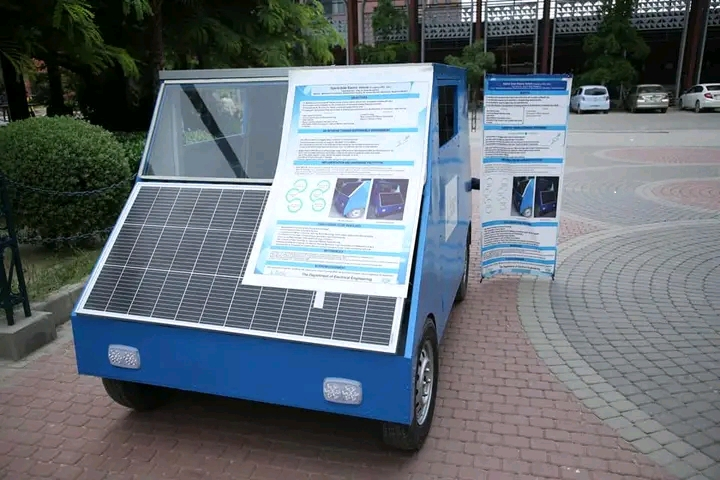Hybrid Solar Electric Vehicle
Product Details
Engineers make cars safer and more reliable. Automotive engineers develop, build, and test auto parts and cars. Their work focuses on safety and productivity challenges in the transportation industry. Design is crucial to product development. Designers coordinate and fine-tune vehicle specs, material concepts, and production procedures with R&D and production. This close partnership ensures predictability. Before creating our project's electrical network, simulation must be done for the design to get better outcomes, ensure the most effective operation and use of every component. Simulation and modelling of electrical systems uses MATLAB/Simulink and Multisim.
The use of two different forms of energies to power our system is emphasized by the name “hybrid”. The first is solar energy, and the second is the single phase, 220V power we have in our homes. Even if your grid is mostly powered by fossil fuels, EVs create less pollution than an ICE automobile since they use energy very effectively. Additionally, as more utility companies switch away from coal in favor of less expensive renewable energy sources like solar and wind, EVs will become increasingly cleaner over time.
Our project car is powered by a Brushless Direct Current (BLDC) motor and dry cell batteries in series and parallel to meet voltage and ampere requirements. Car solar panels will charge these batteries. Due to solar panels' low efficiency, we can't meet our energy needs. The best available solar panel delivers just 550 Watts per day, so that a charge controller is added to recharge our batteries. These batteries would power our electric car's engine, driver’s circuit, disc brakes module, inverter, charging controller, lights, and other electrical connections. The solar panel will supply lights, horn, fan, and other accessories, while the batteries will operate the car.
This project involves both CAD modelling and the design of electrical vehicle components. Since it involves so many different characteristics, such as interior room, dynamic performance, active and passive safety, connection, etc., vehicle design is an extremely complicated field. Both traditional autos, which use internal combustion engines, and electric vehicles are built with the same fundamental design principles in mind. Electrical and mechanical engineers, for instance, are two examples of engineers who work on electric vehicles.
Recently, scholars and practitioners have paid more attention to environmental and energy challenges. Electric cars assist fulfil both goals. Researchers are discussing approaches to build a control mechanism for using brushless DC motors in electric autos. The final outcome of this idea is a hybrid Solar Electric Car capable of 50-70km/h. This automobile is two-seater. This will be a domestic and commercial replacement for bikes and rickshaws. Uber/Careem drivers can utilize this to save money on their everyday commutes.




